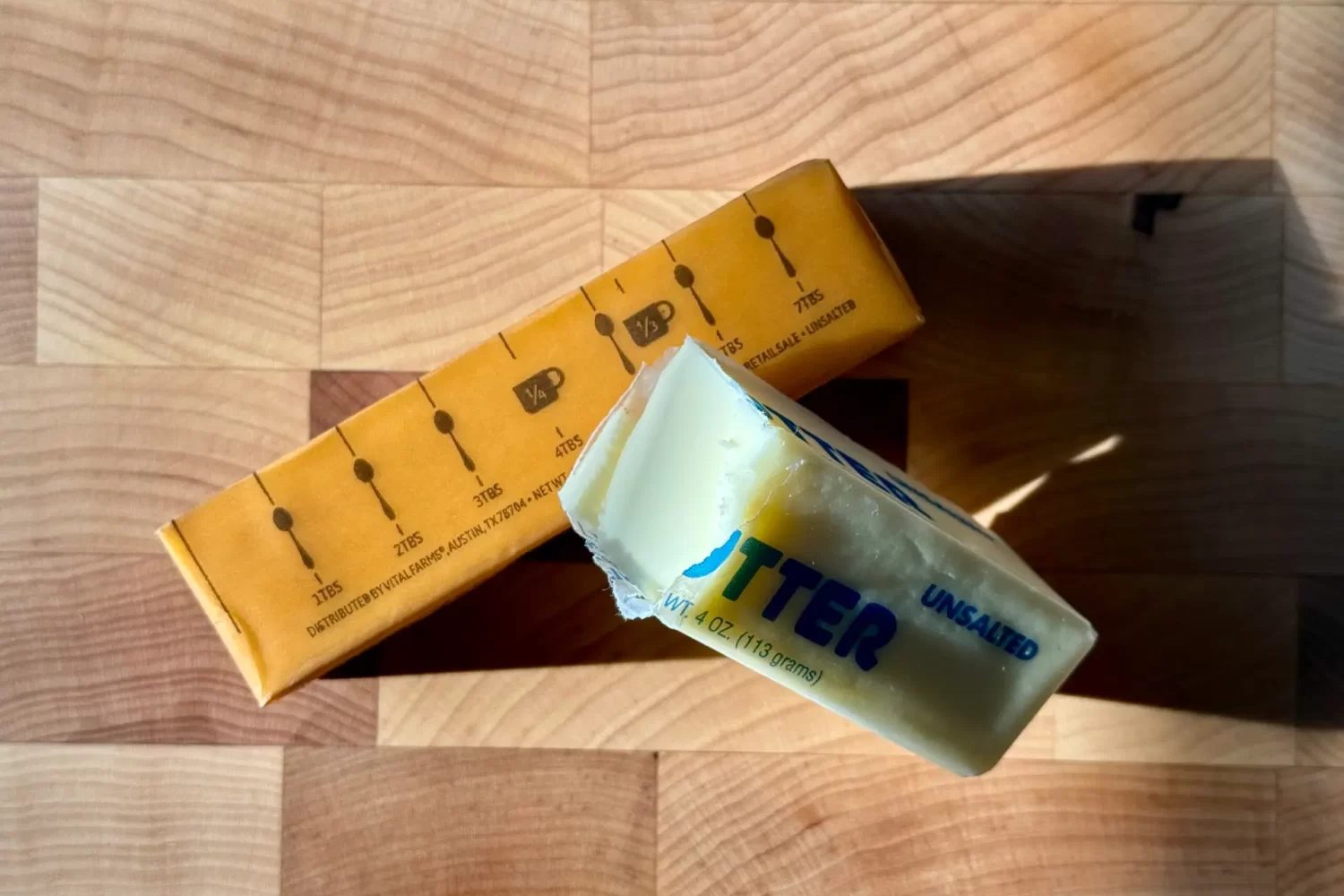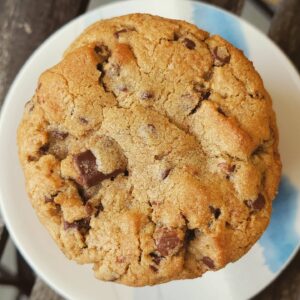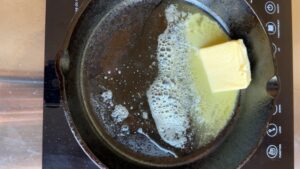European-Style Butter: What It Is & Why I Use It

From soft blocks of margarine to the solid yellow bricks of Plugra, your grocery store’s dairy aisle probably has a large and confusing assortment of butters. When it comes to European-style butter, you might be wondering how to best use it or if it’s necessary to purchase it at all. In America, European-style butter is often harder to find, greater in fats and much more expensive than your standard butter. In some cases, this baker’s gold can be the difference between a perfectly made dish and a heap of disgusting mush. So, what is it and why use it?
What is European-style Butter?
The difference between European-style butter and other butters lies in the fat content. Butter has four parts: fat, water, milk solids and sometimes added salts, cultures, or other “contaminants”. In European-style butter, at least 82% of the product is fat, also called butterfat. The USDA defines standard butter as having an 80% or higher butterfat content. But this 2% difference between standard American butter and European-style means a lot for you and your food.
When Should You NOT Use European-Style Butter?
- Browning Butter: When it comes to home cooking and baking, I suggest using standard butter here. In the browning process, not only are you toasting milk solids, but you are also evaporating water. For at-home use (which tends to be smaller in scale), the concentration of butterfat in either American or European-style butters are very similar when browned, with a negligible difference in overall fat yield.
- General Cooking: When cooking savory foods on a stovetop or baked dishes like casseroles, using butter with a higher fat content won’t necessarily give you a better flavor. Because the water often evaporates similarly to brown butter, you’re left again with almost pure butterfat and milk solids — which you can get just the same from less expensive butter varieties.
When Should You Use European-Style Butter?
I suggest using European-style butter as much as possible when baking. There is a highly variable amount of water in other ingredients like egg whites, egg yolks and fruits that can seriously affect the outcome of your baked goods. When the primary function of butter is providing fat, texture and flavor, even a 1-4% higher water content will make a difference in your baking.
You can see the difference here between my cookies made with European-style butter with 82% butterfat and those made with 85% butterfat. The higher fat content creates a more structurally sound cookie with a strong but delicate crumb. And the flavor! That 3% difference in butterfat can be the difference between an “Oh this is good,” and a “This is the best cookie I’ve ever eaten.”
Why Does Butter Taste Different in Europe?
Here’s where things get funky — seriously. European-style butter and actual butter sourced from the European Union (EU) are different. “European-style” refers to any butter with a EU-standard butterfat content of at least 82% and no more than 16% water. However, butters made in the EU follow extra standards. According to the Food and Agriculture Organization of the United Nations (FAO), EU butters need “to be made from pasteurized cream or pasteurized fermented cream,” and “it has to have a characteristic odor, taste and color.”
If you’ve ever tasted unsalted, American-made butter, you’ll agree with me that it really has no taste. However, European butters can and must be made with something to add character, which can involve changing the cows’ diets, playing with cultures and fermentation, or using a specific churning method. In my baked goods, I’ve found that European butter, even at the lowest 82% butterfat content performs just as well as some American-made butters that have 85%.



This is really interesting, You are a very skilled blogger.
I’ve joined your feed and look forward to seeking more of your magnificent post.
Also, I have shared your web site in my social networks!
Thanks so much, glad to have you!